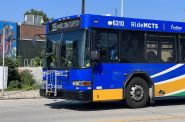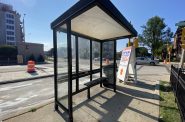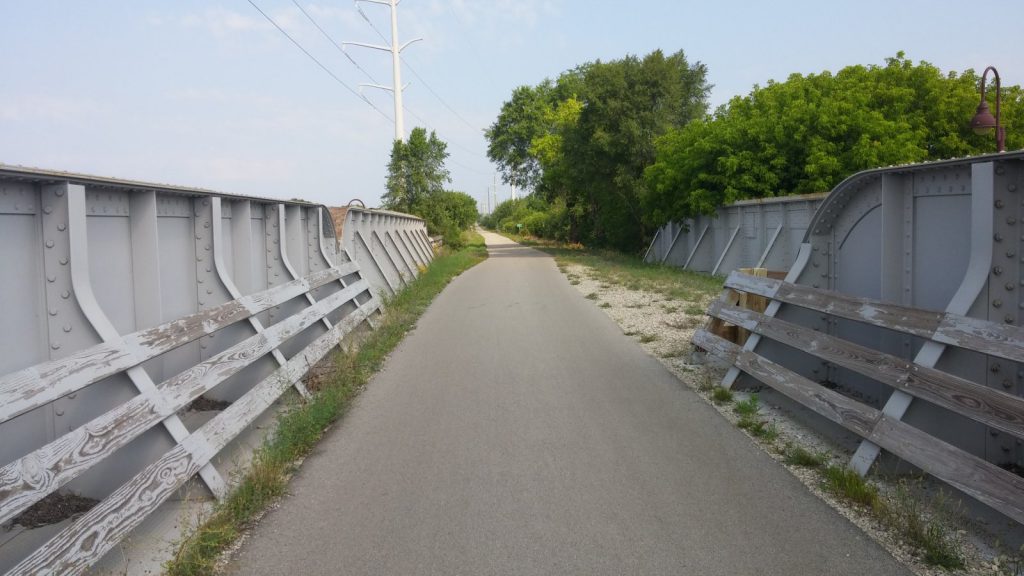City-County Planning Public Trail Improvements Along Lincoln Creek
Plan targets neighborhoods with racial, health and public access disparities.
Milwaukee County and the City of Milwaukee are partnering to plan how to expand and improve access to the network of off-street trails on the city’s Northwest Side.
When it comes to bike trails and multi-use trails, the northwest side of the City of Milwaukee is a desert. So planners from Milwaukee County Parks and the city’s Department of Public Works applied for and received a $49,600 state Transportation Alternatives Program (TAP) grant to study how the trail network can be expanded and better connected to nearby neighborhoods whose residents are predominantly people of color.
The city and the county both have existing trails to build off of. The Beerline Trail, and the county’s Oak Leaf Trail — specifically the Lincoln Creek Parkway leg – both run through the edges of the study area.
The Lincoln Creek leg is short, poorly connected to the Oak Leaf, and dead ends onto W. Cameron Ave. But there are opportunities for improvement.
Because of the Northwest Side’s industrial past, there are many railroad and waterway corridors that are already publicly owned that could be converted to trails. In 2015, the county completed an extension of the Oak Leaf that turned more than three miles of unused railway corridor into a trail.
The area being staked out for trail planning has the highest concentrations of Black residents and health disparities in the state, according to the application.
Public trails improve access to areas where residents can engage in physical activity, improving public health, while also helping them avoid traffic at dangerous intersections and along streets.
A study by Rails to Trails Conservancy found that only 24% of residents in the city lived within two miles of public trails. In areas experiencing disparities like the Northwest Side, only 8% live within two miles of a public trail. The conservancy is a non-profit that advocates for turning former rail lines into trails.
The grant recently awarded by the state, will reimburse the city and the county 80% of the costs required to plan these improvements.
The project has the support of the Northwest Side Community Development Corporation, Rails to Trails Conservancy and the Milwaukee Metropolitan Sewerage District.
In a letter of support for the grant application, Willie Smith, NWSDC Executive Director, wrote that residents of the 30th Street Corridor have concerns about “reckless driving, unsafe arterial roadways, and a lack of access to safe recreational trails.” And, he wrote, “This proposal would begin to address these issues in a creative and equitable way.”
MKE County
-
J.D. Vance Plays Up Working Class Roots, Populist Politics in RNC Speech
 Jul 17th, 2024 by Graham Kilmer
Jul 17th, 2024 by Graham Kilmer
-
Ron Johnson Says Free-Market Principles Could Fix Education
 Jul 17th, 2024 by Graham Kilmer
Jul 17th, 2024 by Graham Kilmer
-
RNC Will Cause Some County Services To Be Moved to Wauwatosa
 Jul 12th, 2024 by Graham Kilmer
Jul 12th, 2024 by Graham Kilmer
Transportation
-
MCTS Adds 28 New Buses
 Jul 13th, 2024 by Graham Kilmer
Jul 13th, 2024 by Graham Kilmer
-
MCTS Designing New Bus Shelters
 Jul 10th, 2024 by Graham Kilmer
Jul 10th, 2024 by Graham Kilmer
-
MCTS Updates RNC Bus Detours To Better Serve Downtown, Riders
 Jul 9th, 2024 by Jeramey Jannene
Jul 9th, 2024 by Jeramey Jannene























Milwaukee County could have promoted the use of the Hank Aaron, the South Shore Trail, and the Oak Leaf Trail going into downtown as viable commuting routes for persons working downtown who did not want to drive or take public transportation during the pandemic. Such a promotion might have drawn more attention from the State and other funding sources.